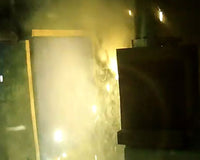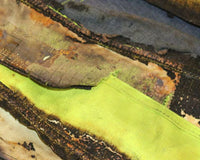If your company employs workers that operate on or near to electrical sources, then it is a requirement to have a comprehensive understanding of the NFPA 70E regulations. Within Article 110 of these regulations, the general safety requirements for working with electricity are detailed.
One of these requirements is to perform a risk assessment in order to identify potential hazards and the risk of an arc flash occurring. Where the potential for an electrical explosion exists, an informed decision on the level of arc flash personal protective equipment (PPE) and clothing is required.
An Arc flash has the potential to cause major external and internal burns, deafness, and even blindness as a result of exposure to bright ultra-violet light. For these reasons it is vitally important that a full and proper risk assessment is conducted on an individual basis for each and every job in order to gauge how much arc flash PPE your workers require.
By establishing what the maximum energy level will be from an arc flash, how long it could potentially last for, if it would happen in a close or open environment, and the size of the flash protection boundary, you can determine what type of PPE and arc flash clothing your workers are required to wear for the task at hand.
Some of the most frequently asked questions about protecting workers from arc flash explosions are answered below:
1. What type of jobs require Arc Flash Protection?
Arc Flash PPE is required for a number of workers within various industries in order to keep them fully protected from harm whilst doing their job.
Anyone who works as an energy-testing technician, dealing with high-powered circuits, should wear not only arc flash PPE, but also arc flash protected clothing. SKANWEAR stock a whole range of t-shirts, shirts, trousers, sweatshirts, polo shirts, base layers, overalls, jackets, waterproofs, and accessories to keep your workers fully protected in all climates.

The job of fixing technical machinery within wind turbines for example is packed full of various hazards, including being exposed to the risk of arc flash occurrence. This means that anyone who works within such an environment should always be wearing clothing and PPE that keeps them protected from an electrical explosion.
The construction industry is full of jobs that require workers to be protected from an arc flash. Those individuals working on the development of roads and motorways for example susceptible to the hazard whilst performing tasks alongside large, high voltage, supply wires and high current conductors.
2. Where do Arc Flashes happen?
Wherever there is an electrical device, there is the potential for arc flashes to happen. Whilst it is true that they typically occur with equipment that is low/high-voltage, an arc flash can occur anywhere where there is enough energy to sustain one. In order to determine where in a system an arc flash could occur, an analysis of each area is required to be performed.
When doing this, pay particular attention to those areas where arc flashes most commonly occur: damaged wires, switchboards, metal clad switch gears, electrical panels, motor control centres, fused disconnects, and transformers.

3. When do you need to be wearing Arc Flash Protection?
The basic PPE and clothing requirements that any company needs to follow regarding keeping their workers safe from arc flash are details in the IEC 61482 standard. However, by providing only the bare minimum, it can, in some cases, still results in workers being severely burned in the occurrence of an arc flash.
Employers may then want to consider providing the best possible arc flash protected clothing to their workers in order to keep them fully protected whilst on the job.
The International Electrotechnical Commission (IEC) set standard covers the areas fabric, design, and performance when it comes to arc flash clothing and PPE. It is a requirement that they are sufficiently tested to see whether it is capable of withstanding exposure to an electrical explosion. It also looks at accessories, such as stud poppers and zippers, to ensure that they still work following exposure to an arc flash.
Here at SKANWEAR we provide a full range of range of CE Certified clothing with 100% Inherent protection against an arc flash, as well as protection against heat and flame related incidents.

4. When might you not need Arc Flash Protection?
Where there is no material risk of being exposed to an arc flash, then flame resistant (FR) clothing and PPE is an adequate alternative for workers to wear. In order to be considered FR, the item of clothing or piece of equipment must either be able to withstand ignition or be quickly self-extinguishing as not to cause the wearer to be burned.
Remember: It's your last line of defence
Although PPE and clothing are the last line of defence for protecting workers from the hazards associated with arc flashes, they are no replacement for safety. By adopting safe working practices or engineering controls, a company can greatly reduce a worker’s exposure to the dangers of an arc flash much before the physical work.
Back to Work Safely
As workers now begin to head back to work after the holidays, it is important that they are reminded about the dangers of arc flash and how they should be correctly protecting themselves by wearing the right clothing for the job(s) that they are working on.




